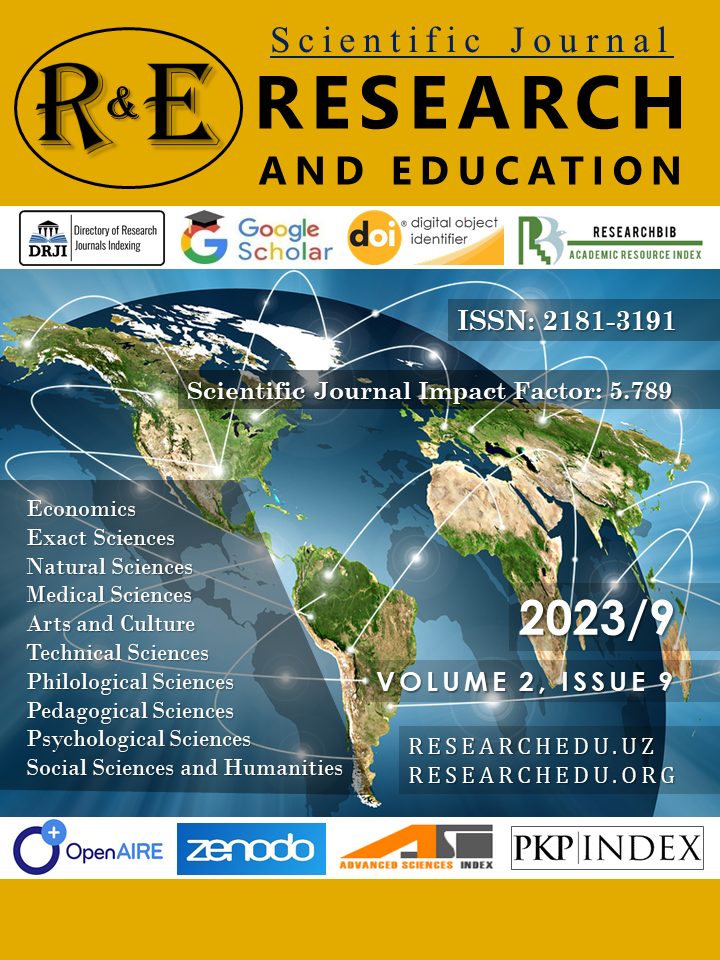DEVELOPMENT OF A STRUCTURE AND ALGORITHM BASED ON NEURAL NETWORKS FOR THE DETECTION AND ANALYSIS OF UNDERGROUND DEPOSITS
Keywords:
ReLU, neural network, bipolar coupling, monopolar coupling, spline functions, quadratic B-spline, piecewise-polynomial methodsAbstract
In the last decade, artificial neural networks and machine learning have become the most used areas for solving complex real-world problems. In particular, problems that are considered too difficult or in some cases impossible to solve with computers are of increasing interest in both academia and industry. This paper considers the digital processing of one- and two-dimensional signals using an artificial neural network. Neural networks are based on the so-called activating function of neurons. This feature is critical to network performance but is often neglected . In most cases, one of the non-adaptive functions is chosen as the activation function. Adaptive sigmoid or ReLU functions are used in many cases, but these functions have disadvantages because adapting data from one limited area affects the overall results. Therefore, the paper proposes the use of flexible quadratic B-spline functions with free nodes. Spline is an activation function that expands the scope and exactly satisfies the approximation condition. This prevents overfitting in neural networks. Including the recurrence property of splines corresponds to the structure of recurrent neural networks.
References
J.S. Lim, Two-dimensional signal and image processing, 1990.
V. Graffigna, C. Brunini, M. Gende, M. Hernández-Pajares, R. Galván, F. Oreiro, “Retrieving geophysical signals from GPS in the La Plata River region,” GPS Solutions, 23(3), 2019, doi:10.1007/s10291-019-0875-6.
X. Wang, Z. Luo, B. Zhong, Y. Wu, Z. Huang, H. Zhou, Q. Li, “Separation and recovery of geophysical signals based on the Kalman Filter with GRACE gravity data,” Remote Sensing, 11(4), 2019, doi:10.3390/rs11040393.
A.I. Grebennikov, “Isogeometric approximation of functions of one variable,” USSR Computational Mathematics and Mathematical Physics, 22(6), 1982, doi:10.1016/0041-5553(82)90095-7.
Kroizer, Y.C. Eldar, T. Routtenberg, “Modeling and recovery of graph signals and difference-based signals,” in GlobalSIP 2019 - 7th IEEE Global Conference on Signal and Information Processing, Proceedings, 2019, doi:10.1109/GlobalSIP45357.2019.8969536.
H. Zaynidinov, S. Ibragimov, G. Tojiboyev, and J. Nurmurodov, “Efficiency of Parallelization of Haar Fast Transform Algorithm in Dual-Core Digital Signal Processors,” in 2021 8th International Conference on Computer and Communication Engineering (ICCCE), Jun. 2021, pp. 7–12, doi: 10.1109/ICCCE50029.2021.9467190.
H. Zaynidinov, S. Ibragimov, and G. Tojiboyev, “Comparative Analysis of the Architecture of Dual-Core Blackfin Digital Signal Processors,” in 2021 International Conference on Information Science and Communications Technologies (ICISCT), Nov. 2021, pp. 1–4, doi: 10.1109/ICISCT52966.2021.9670135.
Завьялов Ю.С., Квасов Б.И., Мирошниченко В.Л. Методы сплайн-функций. Москва: Наука, 1980. - 352 с.
Xaykin S. Neyronnыye seti: polnыy kurs. 22ye izd. per. s angl.- M. Izd. dom «Vilyams» 2006-452s
Musayev A.A, Serdyukov Yu.P. Modeli signalov s optimalnыmi xarakteristikami vo vremennoy i chastotnыx oblastyax // Matematicheskiye metodы v texnike i texnologiyax: sb.tr. XXIX mejdunar. nauch. konf.: v 12 t. T. 3 / Saratov. gos. texn. un-t. 2016. S. 116-123.
Proletarskiy A.V. Algoritmы preobrazovaniya spektrov v bazisax Xaar i Uolsha.//Avtomatizasiya. Sovremennыye texnologii. M: Izd-vo «Innovasionnoye mashinostroyeniye». 2018. T. 72, № 10. S. 453-461


